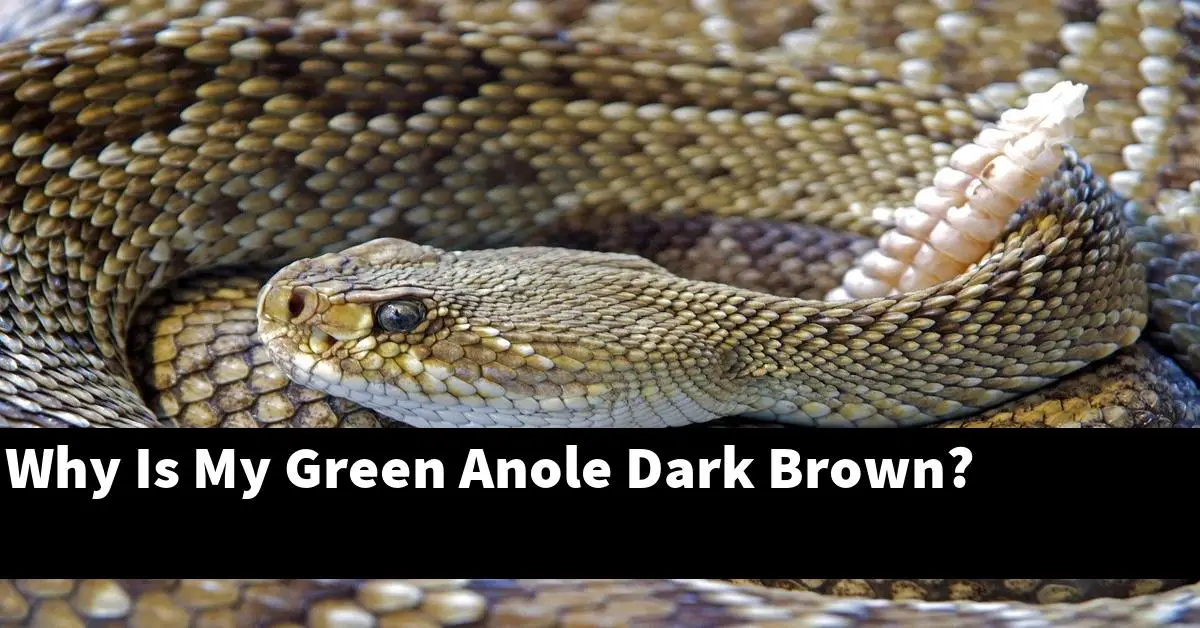If you’re wondering why your green anole has turned brown, you’re not alone. In this article, we’ll explain some of the reasons why this may happen and what you can do about it.
Table of Contents
How can you tell if a brown anole is stressed?
If an anole is experiencing stress, there are several physical signs you can look for. For example, the anole may have increased respiration, an increased heart rate, or changes in behavior.
The anole may also shed its skin more frequently than usual. If you notice any of these changes in your anole, it is important to take steps to reduce the stressors in its environment.
Why did my green anole turn dark brown?
There are a few reasons why your green anole may have turned dark brown.
- First, it could be due to stress or illness. When reptiles are under a lot of stress, they may change their color to help camouflage themselves from predators.
- Secondly, your anole may be getting ready to shed its skin. When reptiles are getting ready to shed, their skin color often changes to help them blend in with their surroundings and protect them from predators.
- Lastly, your anole may be trying to absorb more heat from the sun. Lizards often change their color to help them regulate their body temperature. If your anole is basking in the sun, it may change its color to help it absorb more heat.
Why do lizards change from green to brown?
Lizards change from green to brown for many reasons. For example, green lizards are more likely to be found in areas with lots of vegetation, while brown lizards are more likely to be found in areas with less vegetation.
This is because green lizards are more visible to predators in areas with lots of vegetation, while brown lizards are less visible to predators in areas with less vegetation.
Additionally, green lizards are more likely to be eaten by predators than brown lizards. This is because green lizards are more visible to predators than brown lizards. Finally, green lizards are more likely to overheat than brown lizards. This is because green lizards absorb more sunlight than brown lizards.
Can green anoles turn black?
Yes, green anoles can turn black. The change in color is caused by a hormone imbalance, and it is not permanent. The black coloration is a result of the anole’s body producing more melanin, which is a pigment that gives color to the skin. The change in color can be caused by stress, illness, or a lack of food.
Green anoles and their color changes
Green anoles are unique in that they are able to change their color. This is due to a type of pigment called chromatophores that are found in their skin. These chromatophores are able to expand or contract, depending on the temperature and light conditions.
When it is warm and sunny, the chromatophores will expand and the anole will appear green. When it is cold or dark, the chromatophores will contract and the anole will appear brown.
This ability to change color is thought to help the anoles regulate their body temperature. By appearing darker in color, they are able to absorb more heat from the sun. And by appearing lighter in color, they are able to reflect more heat and stay cooler. This is an important adaptation for green anoles, as they are found in a variety of habitats ranging from the hot, humid tropics to the cooler, drier regions of the southeastern United States.
So, the next time you see a green anole, take a closer look and see if you can spot any changes in its color.
The causes of a green anole’s dark brown color
When an anole is exposed to colder temperatures, its body will produce more of the pigment melanin, resulting in a darker brown color. This is why you may see green anoles with a darker brown color during the winter months.
There are also some green anoles that have a genetic mutation that causes them to produce more melanin, resulting in a darker brown color.
The benefits of a green anole’s dark brown color
A green anole’s dark brown color is the result of a process called melanization. Melanization is the production of the pigment melanin. Melanin is produced by cells called melanocytes. Melanocytes are found in the skin, hair, and eyes of all vertebrates.
The benefits of melanization are many. Melanin protects the skin from ultraviolet radiation (UVR) damage. UVR is a known cause of skin cancers. Melanin also helps to regulate body temperature. In warm climates, melanin helps to absorb and dissipate heat. In cooler climates, melanin helps to keep the body warm by absorbing and retaining heat.
The benefits of a green anole’s dark brown color are numerous. Melanization protects the skin from ultraviolet radiation damage, helps to regulate body temperature and provides camouflage against predators.
Summary
There are a few reasons why your green anole may have changed color to dark brown. It could be because of the temperature, humidity, or lighting in its environment. If you think the change in color is due to a health issue, take your anole to the vet to get checked out.

